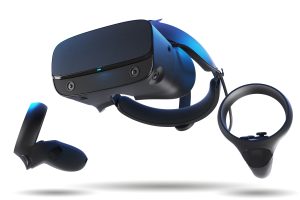The Metaverse – a vague, complex subject filled with potential – is rushing ever closer to general use. While many are already dabbling through the use of AR/VR headsets, the confusing subject becomes easier to understand if we think of the phenomenon as:
A combination of technologies that allow humans to interact digitally in a 3D, real-time environment.
However we access this – be it through the use of a headset or other technologies that will be developed in the near and mid future – there’s one central requirement that it needs: the ability to instantly process and action incredibly large amounts of data.
This is the greatest challenge for the advancement of the Metaverse – and one in which Edge computing will play a leading role.
Increasing collective computing power
It’s been predicted by Intel’s Senior VP that to successfully enable the Metaverse, computing power will need to increase a thousand-fold. Latency will need to be reduced to sub-20ms for a roundtrip, something that Edge capability is ripe to address.

Without the general public even being aware, the online plane is already migrating to a de-centralised state. Much as the shift to the cloud accelerated exponentially during the 1990s, we can expect the move to what’s being referred to as Web 3.0 to have a similar meteorological rise. While Edge computing won’t replace cloud storage, it will naturally become a hybrid landscape as Metaverse needs evolve.
As users embrace new digital platforms, Edge data centres will take up the slack that their traditional cousins are unable to service. Crucial elements that the Edge will overcome for Metaverse use in todays and tomorrow’s environment include:
- Energy-efficient technology
- Infrastructure support
- Minimal or no latency
The latter is vital to prevent an issue known as cybersickness. With symptoms very similar to that of motion sickness, it’s caused by virtually imperceptible delays in information being presented to users. While it’s not noticeable at a conscious level, the subconscious brain reacts and – with extended use – can cause disorientation and nausea.
As the technology becomes more widespread – through the use of Edge or near-Edge data centres – so the cost aspect of Metaverse reality will reduce.
Micro Data Centres (MDCs) are likely to play a significant part in this rollout. The technologies to truly bring the Metaverse to the mainstream will be many, but the ability to sort and action the gargantuan amounts of data involved can only be served at or close to where it’s produced.
The interactive, 3D world of the future won’t happen overnight. However, much as the move to the cloud was decades in the making, once everything is in place, the shift will likely be fast.
Our technology is already one of the most advanced in the world, making it well-placed to serve such tech. From containerised solutions, such as the Zella Max, to exterior MDCs (Zella Outback), they all have the core, cutting-edge technology of the Zella Pro beating at their heart.
While we’re not quite into the realms of The Matrix yet, rest assured that the Metaverse is real and it’s coming. And we can expect Edge computing to take a leading role. So watch this space…






